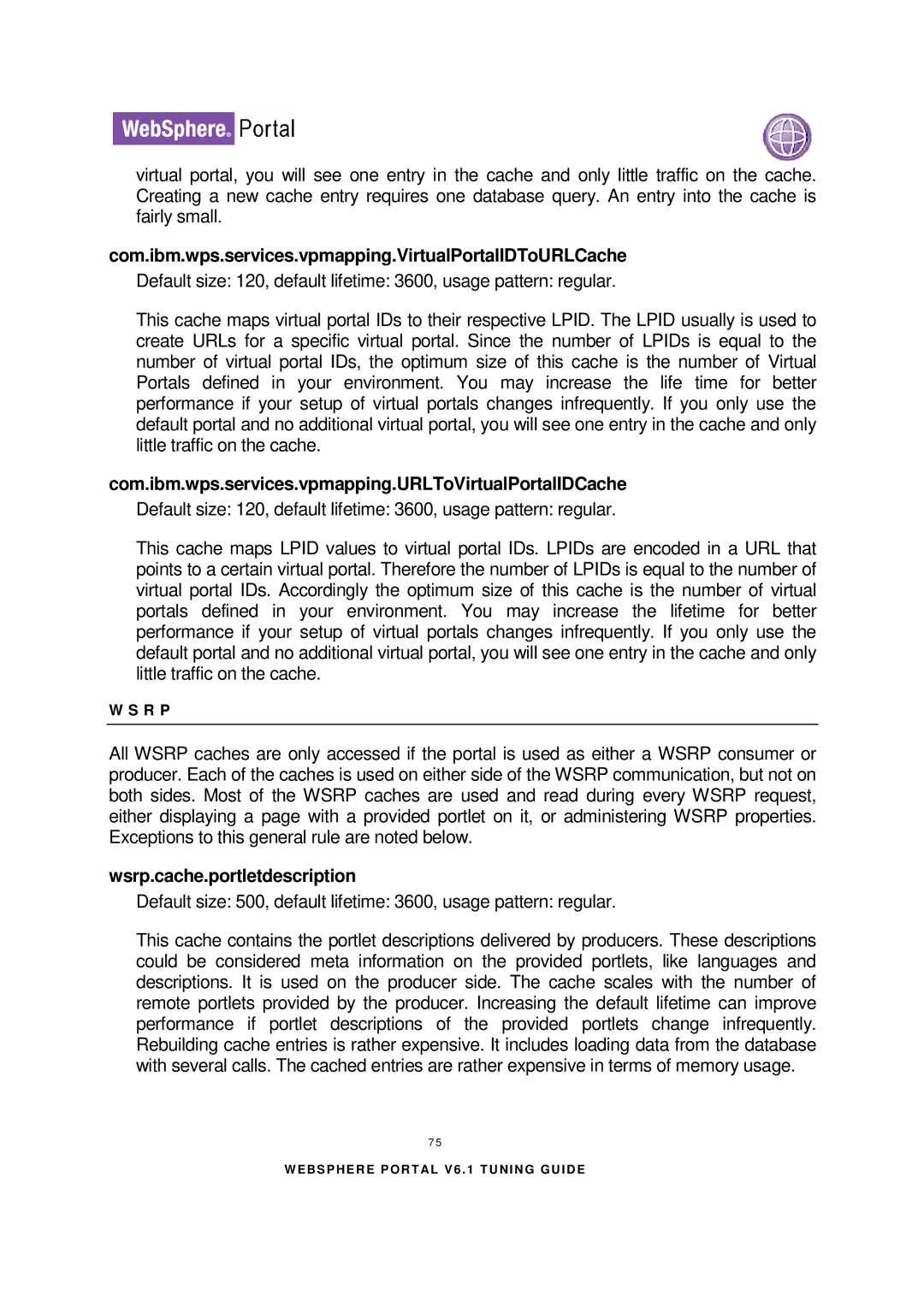
virtual portal, you will see one entry in the cache and only little traffic on the cache. Creating a new cache entry requires one database query. An entry into the cache is fairly small.
com.ibm.wps.services.vpmapping.VirtualPortalIDToURLCache
Default size: 120, default lifetime: 3600, usage pattern: regular.
This cache maps virtual portal IDs to their respective LPID. The LPID usually is used to create URLs for a specific virtual portal. Since the number of LPIDs is equal to the number of virtual portal IDs, the optimum size of this cache is the number of Virtual Portals defined in your environment. You may increase the life time for better performance if your setup of virtual portals changes infrequently. If you only use the default portal and no additional virtual portal, you will see one entry in the cache and only little traffic on the cache.
com.ibm.wps.services.vpmapping.URLToVirtualPortalIDCache
Default size: 120, default lifetime: 3600, usage pattern: regular.
This cache maps LPID values to virtual portal IDs. LPIDs are encoded in a URL that points to a certain virtual portal. Therefore the number of LPIDs is equal to the number of virtual portal IDs. Accordingly the optimum size of this cache is the number of virtual portals defined in your environment. You may increase the lifetime for better performance if your setup of virtual portals changes infrequently. If you only use the default portal and no additional virtual portal, you will see one entry in the cache and only little traffic on the cache.
W S R P
All WSRP caches are only accessed if the portal is used as either a WSRP consumer or producer. Each of the caches is used on either side of the WSRP communication, but not on both sides. Most of the WSRP caches are used and read during every WSRP request, either displaying a page with a provided portlet on it, or administering WSRP properties. Exceptions to this general rule are noted below.
wsrp.cache.portletdescription
Default size: 500, default lifetime: 3600, usage pattern: regular.
This cache contains the portlet descriptions delivered by producers. These descriptions could be considered meta information on the provided portlets, like languages and descriptions. It is used on the producer side. The cache scales with the number of remote portlets provided by the producer. Increasing the default lifetime can improve performance if portlet descriptions of the provided portlets change infrequently. Rebuilding cache entries is rather expensive. It includes loading data from the database with several calls. The cached entries are rather expensive in terms of memory usage.
7 5
